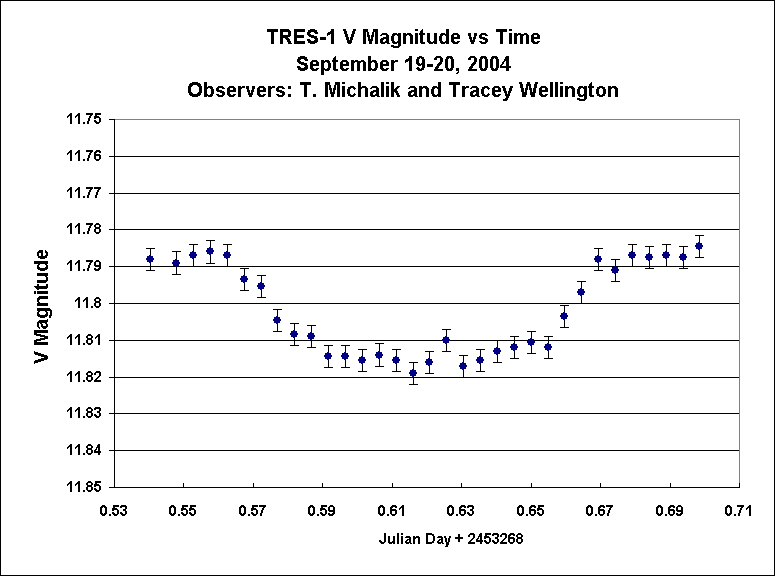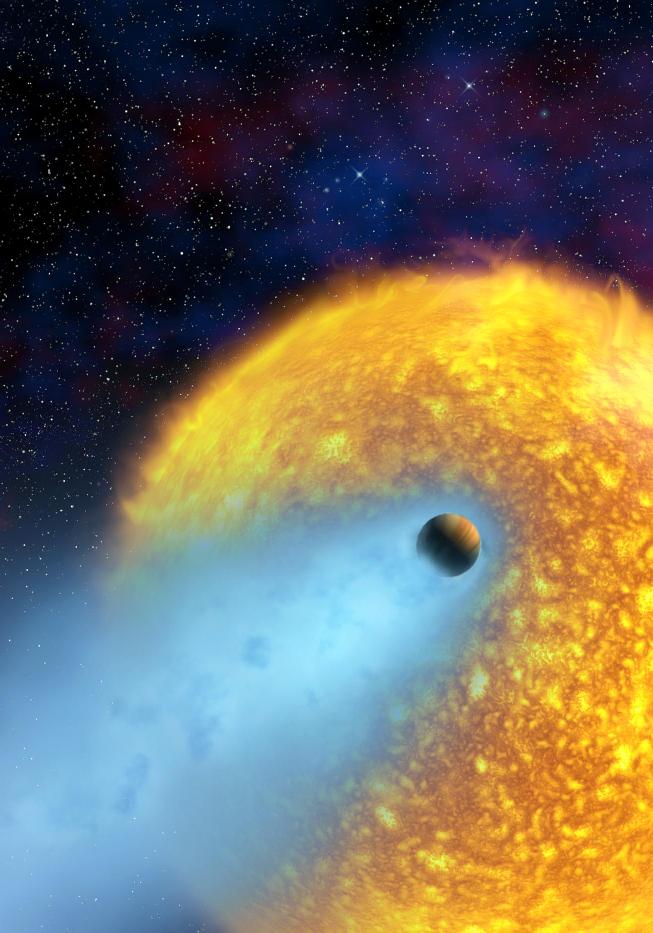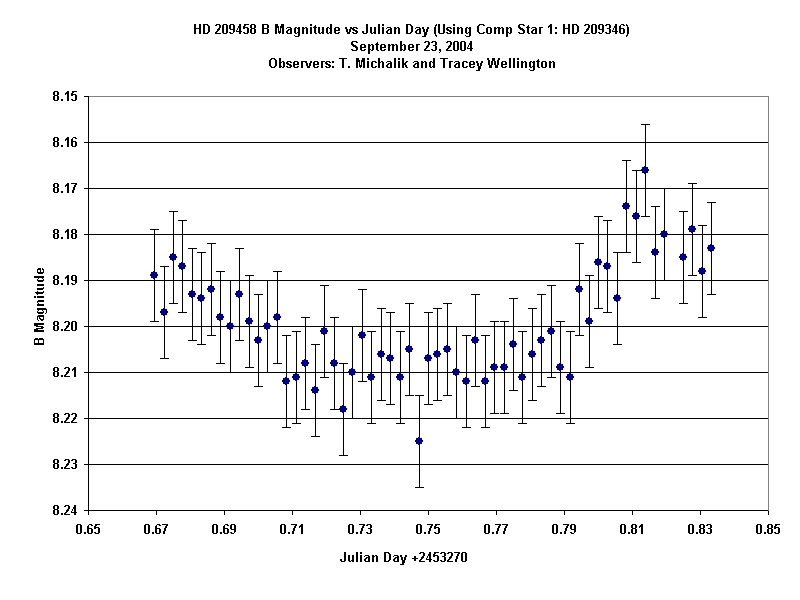
EXOPLANET TRANSITS OF TRES-1 AND HD 209458
On August 24, 2004 an observing network known as the Trans-Atlantic Exoplanet Survey (TRES) announced the discovery of an exoplanet orbiting an 11.8 magnitude KO star about 500 light years away in the constellation Lyra. The newly discovered planet has a mass about 3/4 Jupiter's mass, and is a bit larger than Jupiter. This distant Jupiter-like planet orbits its star once every 3.03 days at an orbital radius of only 0.04 AU. The planet's orbital plane happens to lie very near our line of sight from Earth, so, once every orbit, the planet passes in front of its star, an event called a transit. During a transit the star's observed brightness drops slightly because a small portion of the starlight coming towards us is blocked by the intervening planet. The tiny decrease in the star's light, about a two percent decrease, was first detected by a 4-inch Schmidt telescope, part of the TRES network, stationed in the Canary Islands. The planet detected by this relatively modest 4-inch telescope was the first exoplanet to be discovered by observing its transit.

Representation of an exoplanet transiting its parent star.
Senior physics major, Tracey Wellington, and I set out to detect this exotic transit at Winfree Observatory in September, 2004.
During the night of September 19-20, 2004 we observed the exoplanet's parent star, called TRES-1, from 8:58 PM EDT to 12:46 AM EDT. We took 33 V-filter CCD images, one every 7 minutes during the session. The exposure time was 300 seconds for every image.
The light curve shown below clearly shows the transit. We were both amazed and excited that we could directly observe the presence of a planet orbiting another star 500 light years away!

In September, 1999 a previously discovered exoplanet was observed to transit a star called HD 209458. HD 209458 is 174 light years away in the constellation Pegasus. The planet, called HD 209458b, has a mass of about 0.69 Jupiter masses and a diameter about 1.43 times Jupiter's diameter. The planetary orbital radius is only 1/8 the average distance between Mercury and our Sun, and one complete orbit takes only 3.524 days! This planet is so close to its parent star that the planet's atmosphere is "boiling away". The chemical elements sodium, hydrogen, oxygen and carbon have been detected in the planet's atmosphere.

The atmosphere of exoplanet HD 209458b is "boiled" away by its nearby parent star.
Tracey Wellington and I also attempted to observe a transit of HD 209458b with mixed success. We began our observing run at 12:04 AM EDT on September 23, 2004. We took 59 images through a B-filter, one every 4 minutes until 4:04 AM EDT. Each exposure was 90 seconds long. We used a Bessell B-filter because HD 209458 was such a bright star, and our CCD camera is much less sensitive in blue light. Unfortunately, we could not obtain a beautiful clean light curve for the transit as we did for TRES-1. Instead, our light curve looked like this:

This light curve definitely shows the transit, but it is not pretty. We attempted to smooth the fluctuations by producing another light curve. In the next light curve each point represents an average of 5 consecutive brightness measurements centered at the temporal midpoint of the 5 images. This results in the following much smoother light curve:

The transit is much more obvious in the smoothed curve. We have no explanation for the apparent post egress brightening evident in the curve.